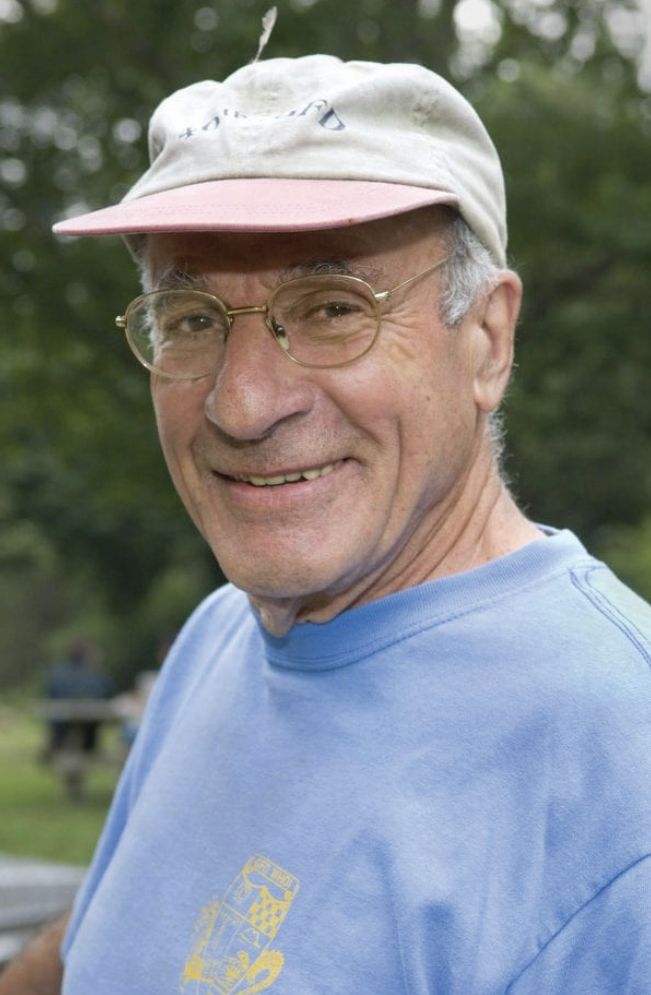George Veronis
DOI: 10.1063/PT.3.4372
A principal architect of geophysical fluid dynamics, George Veronis died on 30 June 2019 of natural causes. From fundamental advances in nonlinear stability theory to theoretical oceanography, his work provided frameworks for laboratory experiments and in-field observations alike.

George Veronis
TOM KLEINDINST © WOODS HOLE OCEANOGRAPHIC INSTITUTION

George was born in New Brunswick, New Jersey, on 3 June 1926 to Greek immigrants. During World War II, he enlisted in the US Navy and served as a submariner in the Pacific Ocean. He attended Lafayette College on the GI Bill and obtained his BS in mathematics in 1950. He went on to Brown University for his PhD in applied mathematics, which he received in 1954 under George Morgan. Because of his navy experience and the importance of physical and mathematical sciences to the Allied war effort, he focused his thesis work on oceanographic flows.
Before Earth-observing satellites became available, researchers relied on sparse observations to understand atmospheric and oceanic dynamics. Much of the theoretical and observational focus in the 1950s centered around the behavior of currents, such as the Gulf Stream, and the general oceanic circulation, as described in the theories of George Carrier, Walter Munk, and Henry Stommel. Wind-driven circulation introduces Coriolis terms in the Navier–Stokes equations, and understanding their impact is complicated by the role of boundary geometry, among other things. So researchers turned to studies of large-scale flows in various simplified basin shapes as model problems.
A particular challenge for theorists was to incorporate the essential transient effects of wind forcing on the circulation. From the outset, George was at the cutting edge, pushing the boundaries of mathematical modeling. Hence, when John von Neumann and Jule Charney started the numerical forecasting group at the Institute for Advanced Study in Princeton, New Jersey, George was a natural candidate to hire; he moved to Princeton in 1953, before his thesis was complete.
In 1945 von Neumann proposed a high-speed digital computing system that could, in principle, solve the nonlinear partial differential equations of fluid flow. In 1953, multiple scientific computing efforts were underway. In Charney’s meteorology group, George’s focus was to numerically test the so-called quasi-geostrophic equations, which predict slow, large-scale motions and are insensitive to high-frequency processes such as gravity waves. He thus became intimate with both numerical analysis of differential equations and their geophysical implications.
At the institute, George met Stommel, who had a singular influence on his personal and professional trajectories. Stommel recruited him in 1956 to the Woods Hole Oceanographic Institution as a research mathematician. Fractious relations with the director led George and several others to leave in 1963 for MIT. George moved to Yale University in 1966 and was Henry Barnard Davis Professor of Geophysics and Applied Science when he retired in 2009.
Henri Bénard’s observations that a layer of fluid heated from below begins to flow in a well-defined pattern beyond a critical heating motivated Lord Rayleigh in 1916 to analyze the linear stability of the heated fluid layer. In 1958 George and Willem Malkus defined the nonlinear, so-called finite-amplitude instability in the problem, and in so doing, laid down the mathematical framework for all nonlinear instabilities. One cannot overstate the impact in applied mathematics of that long and serious calculation, which provided the language and a demonstration of such nonlinear instabilities.
Perhaps motivated by that success and a like-minded milieu of colleagues, George, Stommel, Malkus, Louis Howard, Joseph Keller, Edward Spiegel, and Melvin Stern launched a summer program on geophysical fluid dynamics (GFD) at Woods Hole in 1959. Their view was that GFD, then in its early stages of development, should be treated as a subfield of theoretical physics that can provide a tapestry for the systematic education of graduate students in physical and mathematical sciences. With a modest grant, the 10-week program continues to bring together an international cadre of 10 graduate students and staff and to attract mathematically minded interdisciplinary scientists. For six decades, hundreds of graduate students have experienced its focused period of immersion in GFD. It was so influential to George that he viewed his career as having two intellectual homes—Yale and the GFD program.
At Yale, George taught the GFD lecture course to legions of students, and because of his central role in the evolving field, they received a cutting-edge view of it. As the director of undergraduate studies for the applied mathematics program, George exposed students to the connections between mathematics and the natural environment. His patience in research translated into his guidance of both colleagues and students. He was generous with his time and prudent with his advice.
George’s memory was as legendary as his seriousness and good sense of humor. During the GFD program, he tried to teach fellows how to play softball to compete in the local league. His competitiveness was worn on both sleeves. If George felt an injustice had been dealt to a colleague or friend, he was a relentless advocate. That loyalty and support were most evident when it came to his wife and children, who were a constant source of pride and discussion. Their lakeside cottage on Crooked Pond was the last meeting place of GFD participants for nearly 60 years, and it is certainly his spiritual resting place.
More about the Authors
Katepalli Sreenivasan. New York University, New York City.
John Wettlaufer. Yale University, New Haven, Connecticut.
